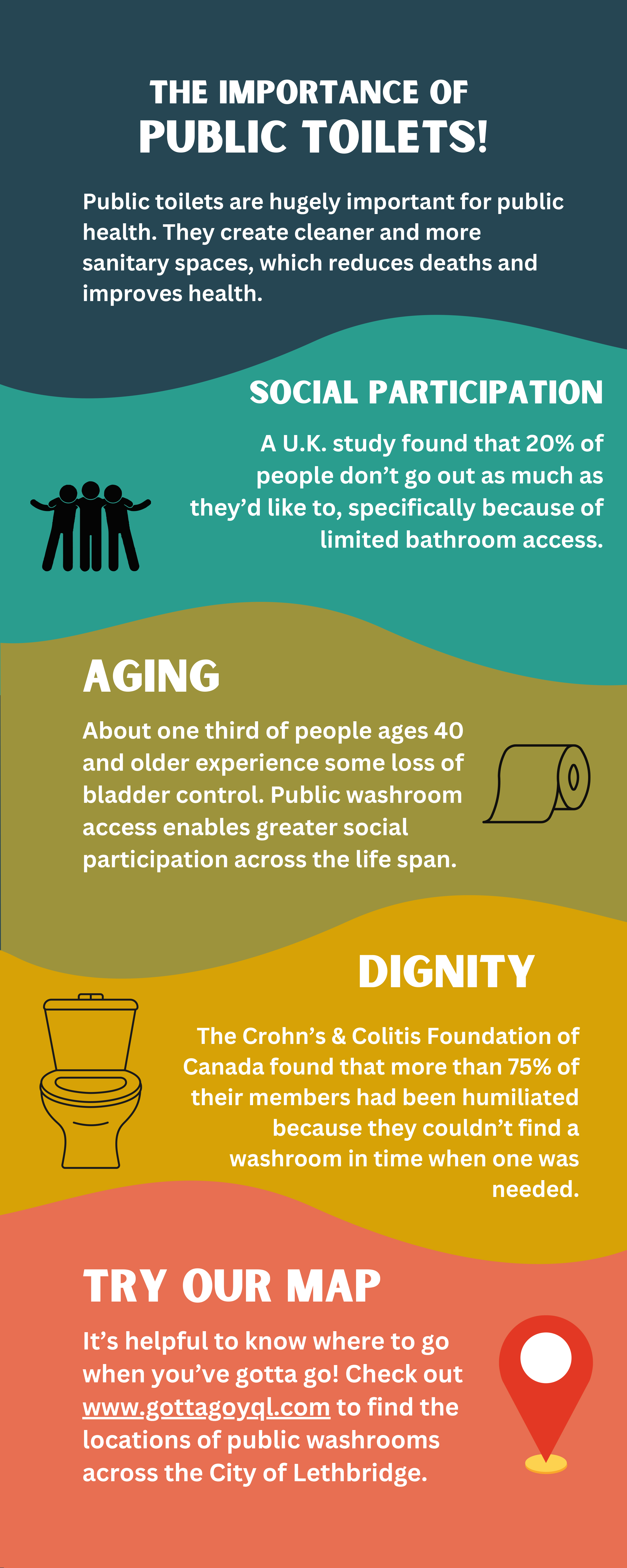A team of University of Lethbridge researchers have created a digital interactive map of publicly available washrooms in the city called GottaGoYQL.

Known as the Lavatory Laboratory, the research team, including Drs. Julia Brassolotto, a public health professor, Philip Bonnaventure, a geography professor, along with geography master’s student Zeeshan Hamayun and public health master’s student Brianna Rogers, travelled around town mapping public toilet locations and documenting their features.
“Public washroom access is important for public health, equity and dignity,” says Brassolotto. “It is also a critical part of an age-friendly and accessible community. We all need to use the washroom throughout the day, each with different needs and varying degrees of urgency.”

Public toilets create cleaner and more sanitary spaces, which reduces deaths and improves health. They also create greater social participation. One study done in the UK found that 20 per cent of people don’t go out as much as they’d like to because of limited bathroom access. About a third of people lose some bladder control as they get older, and having public washrooms available enables them to participate more. People with medical conditions such as Crohn’s and colitis may be especially impacted because they may need to access a washroom quickly.
The GottaGoYQL map indicates the location of public washrooms around the city and the amenities each one offers. Public washrooms are those that members of the public can use without needing to be paying customers. In addition to the location pins, the map also provides information on whether the washrooms are gendered, their accessibility features, if a changing table is available and more.
“Maybe you’re a new parent who wants to find a washroom with a change table,” says Brassolotto. “Or maybe you have a health condition that requires frequent bathroom visits or you’re out walking the dog when nature calls. Whatever the situation, the map shows you where to go when you’ve gotta go.”
